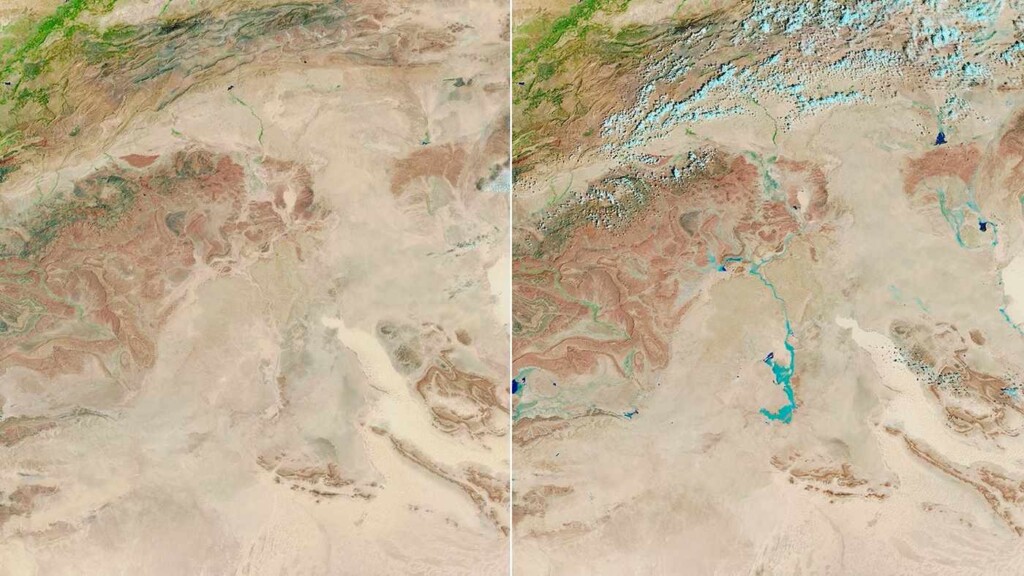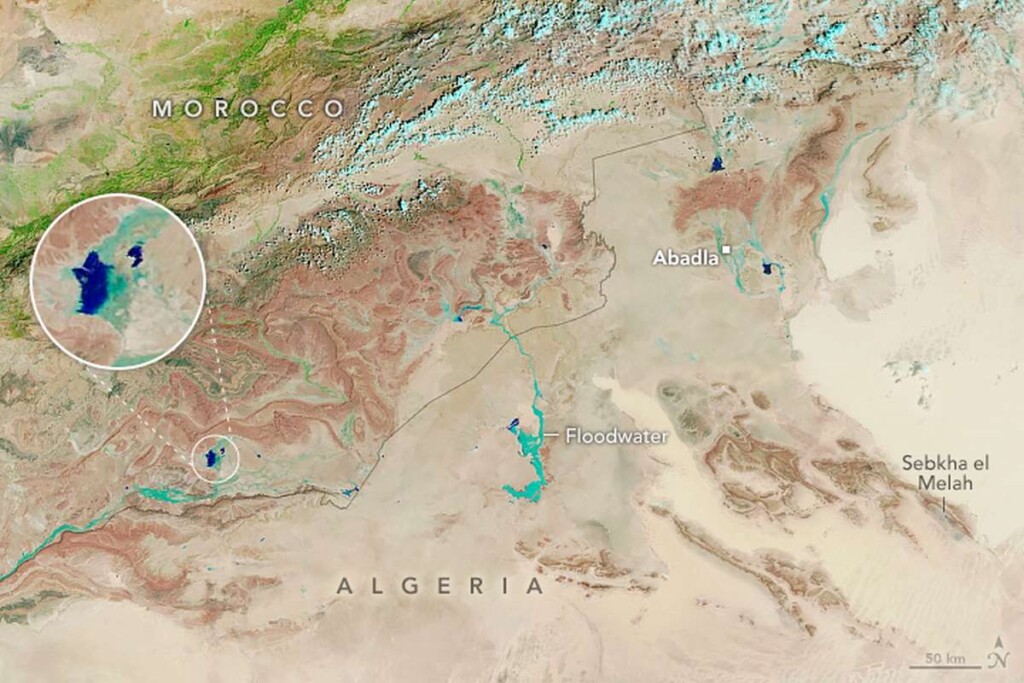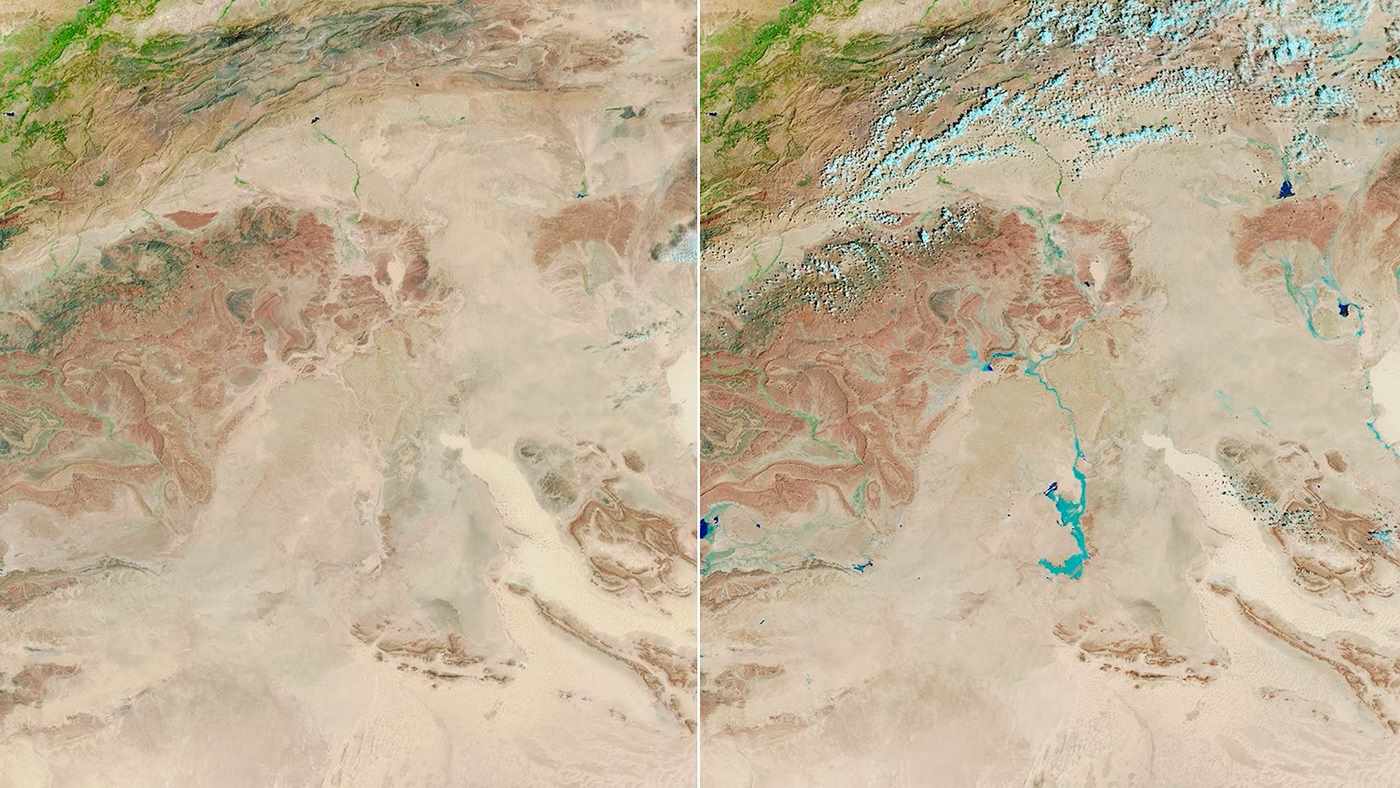
Bountiful rains are greening parts of the Sahara that haven’t had a good soak in years.
An extratropical cyclone pushed across the northwestern Sahara on September 7th and 8th and drenched large, treeless swaths of Morocco, Algeria, Tunisia, and Libya.
At the same time, the Intertropical Convergence Zone, a line of rainfall that floats between a few degrees latitude on either side of the equator between July and September, has pushed farther north than normal, soaking Niger, Chad, and Sudan according to data from NOAA’s Climate Prediction Center.
As a result, these portions of the Sahara Desert are anywhere from twice as wet to more than six times wetter than they normally are.
“When you get these really exceptional rainfall events, the dunes become these just incredibly verdant and flowered fields where the plants will just instantly grow for a short period of time to take advantage,” Peter de Menocal, president and director of the Woods Hole Oceanographic Institution, told ABC News.
Images from NASA’s MODIS Satellite have revealed some of this greening, while at the same time showing that lakes which have long been dry are now filling up, such as one in Morocco’s Iriqui National Park.
Moshe Armon, a senior lecturer at the Institute of Earth Sciences and the Hebrew University of Jerusalem, said in a statement that between 2000 and 2021, Sebkha el Melah, a salt flat in central Algeria, has only filled six times. He suspects this month’s rains will be enough to make that seven.

11,000 years ago and beyond, the Sahara looked a lot more like the savannah of Kenya and Tanzania than the world’s largest non-polar desert that we see today. Evidence of this is all over the northern half of the continent, from thousands of fossilized lighting bolts found embedded in soil all over the Sahara, to evidence of rainfall erosion on the body of the Sphinx in Egypt, to the prehistoric footprint of Lake Chad, which is tens of thousands of square miles larger than the current water level.
LIVING IN THE DESERT: Device Pulls Dozens of Liters of Water from the Air–Already Being Installed in Jordanian Desert Homes
The rains this year it must be said have resulted in some ghastly flooding, displacing thousands of people, destroying homes, and costing hundreds of lives.
RAINS ENDING DROUGHTS: Winter Rains Cured California’s Three-Year Drought and Summer’s Record Heat Didn’t Bring a New One
While rich in species diversity, natural beauty, and cultural heritage, living in a desert often means living in poverty, and droughts, which are predicted to increase in severity in the coming years, will strain desert resources all the more. Because so much of desert life and culture is adapted to making the most of freak rainfall events like this one, the water will help preserve delicate livelihoods for months, even years to come.
WATCH the story below from ABC News…
SHARE This Story Of Green Appearing From The Brown On Social Media…




















